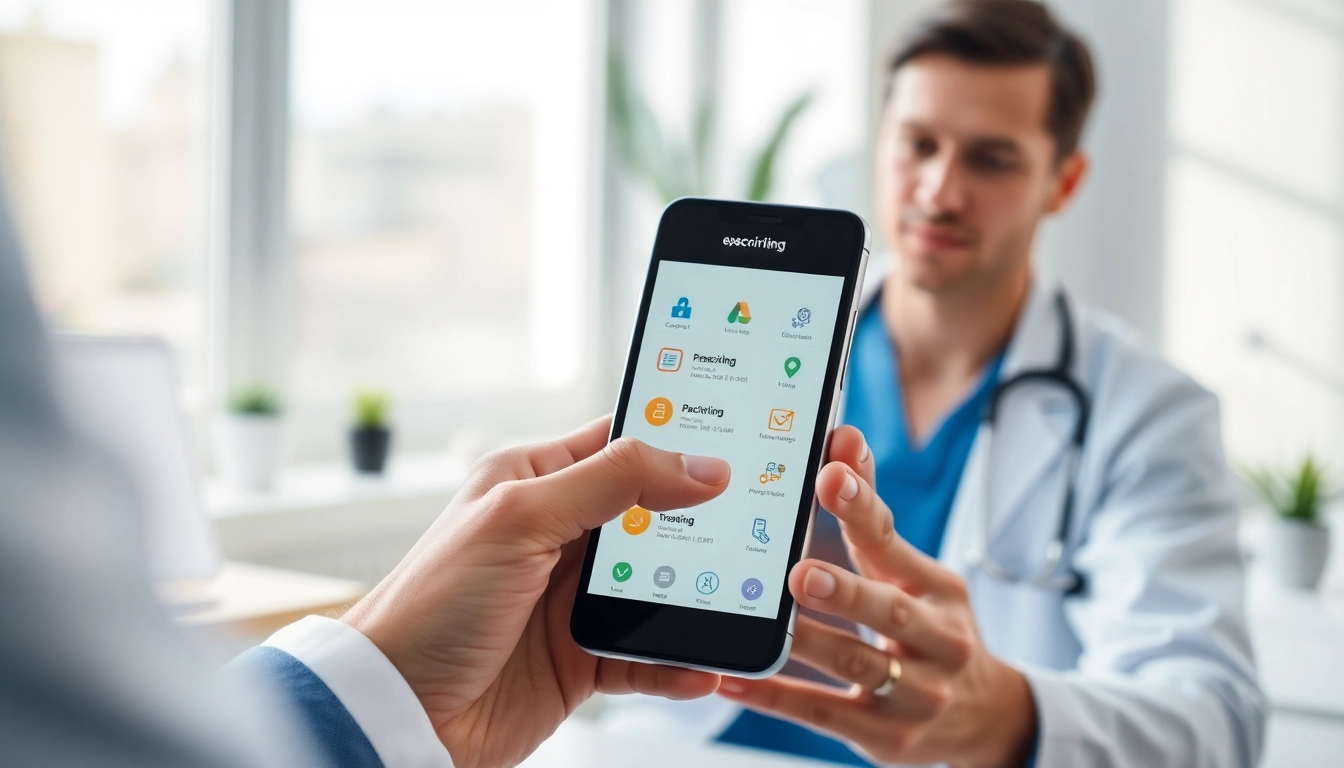Understanding the Essentials of E-Prescription
What is E-Prescribing?
E-prescribing, or electronic prescribing, is a digital method that allows healthcare providers to write and send prescriptions to pharmacies electronically. This process replaces the traditional paper-based approach, streamlining the medication ordering process and enhancing communication among healthcare participants. By using specialized software or mobile applications, physicians can create accurate prescriptions, verify patient information, and ensure the availability of medications, all while reducing the risk of prescription errors that can occur with handwritten notes.
Benefits of E-Prescription Apps for Android
E-prescription apps for Android provide numerous advantages for healthcare professionals. First, they enhance efficiency by allowing doctors to prescribe medications quickly and easily from their smartphones or tablets. This capability is particularly important in fast-paced environments where time is of the essence.
Next, these apps contribute to improved patient safety. By utilizing standard protocols and drug interaction checks, e-prescribing minimizes the chances of prescribing errors. In addition, e-prescription systems facilitate better communication between physicians and pharmacists, ensuring that patients receive the correct medications in a timely manner.
Furthermore, e-prescription apps enhance patient compliance, as they enable patients to receive prescriptions directly via SMS or email, allowing them to share it with their chosen pharmacy. This ease of access encourages timely medication fill-ups and reduces delays in treatment.
Lastly, for practices seeking to optimize their workflow, eprescription apps for android can help minimize administrative burdens and enable electronic record-keeping, making audits and data retrieval simpler.
Key Features to Look For
When choosing an e-prescription app for Android, it’s essential to look for tailored features that address your specific practice needs. Essential features include:
- User-friendly interface: Ensure that the app offers an intuitive design, facilitating quick adoption by healthcare providers.
- Integration with existing systems: Opt for apps that seamlessly integrate with Electronic Health Record (EHR) systems and pharmacy networks to streamline operations.
- Security and compliance: Verify that the app complies with healthcare regulations such as HIPAA to protect patient data.
- Real-time prescription tracking: Choose applications that allow doctors to track the status of prescriptions in real-time.
- Patient engagement tools: Look for features that educate patients about medications and send reminders for refills or adherence.
Top Features of E-Prescription Apps for Android
User-Friendly Interface
A user-friendly interface is crucial for any technology that healthcare professionals will use. E-prescription apps should provide straightforward navigation, clear layouts, and quick access to essential features. This enhances usability, reduces the learning curve, and ensures that practitioners can focus on patient care rather than struggling with technology.
Integration with Pharmacy Systems
For an e-prescribing solution to be effective, it must connect smoothly with pharmacy systems. This feature enables real-time communication between prescribers and pharmacies, significantly reducing the time taken for prescriptions to be filled. Integration minimizes human error, increases prescription accuracy, and fosters a more efficient healthcare environment.
Security and Compliance Measures
Security features are paramount in e-prescribing apps due to the sensitive nature of health data. Every app should have robust encryption methods and comply with regulations like HIPAA, ensuring that patient information is securely protected. Regular audits and updates are also necessary to keep the app current with evolving security standards.
How to Choose the Right E-Prescription App for Android
Assessing Your Practice Needs
Choosing the right e-prescription app begins with a thorough assessment of your practice’s needs. Evaluate your practice size, typical patient load, and the complexity of medication prescriptions. Determine whether your focus is on a simple prescribing process or if you require advanced features such as telemedicine integration and comprehensive patient data analytics.
Comparison of Popular E-Prescription Solutions
When considering different e-prescription solutions, perform a detailed comparison based on features, ease of use, technical support, and pricing. It’s helpful to use lists or side-by-side comparison charts to weigh the pros and cons of each option. Engage with user reviews and seek out testimonials from other healthcare professionals to gain insights into real-life usage and potential pitfalls.
User Reviews and Testimonials
Reading user reviews can provide valuable insights into the practical strengths and weaknesses of different e-prescription apps. Look for patterns in feedback regarding user experience, support response times, and specific features that have been particularly beneficial or troublesome. Testimonials can help validate your choice or prompt deeper investigation into certain apps that may not be as favorable.
Implementing E-Prescription Apps in Your Practice
Steps to Get Started
Implementing an e-prescription app requires a structured approach. Begin with a comprehensive plan that includes a timeline and responsibilities. Steps include:
- Training staff: Ensure that all staff members understand how to use the app effectively, from providers to administrative personnel.
- Testing the software: Prior to going live, run pilot tests to address any issues and Familiarize staff with troubleshooting common problems.
- Monitoring the rollout: After implementation, actively collect feedback and closely monitor usage to identify areas for improvement.
Training Your Staff Effectively
Training is pivotal in leveraging any new technology efficiently. Hands-on workshops and training seminars can help staff feel comfortable with the e-prescribing app. Creating a detailed user manual or providing ongoing support through an FAQ can ensure that questions are answered outside of training sessions.
Monitoring Performance and Usage
Once the app is implemented, continuous monitoring will help gauge its effectiveness. Utilize analytics tools to track prescription accuracy, staff compliance, and patient satisfaction. Regular feedback sessions can also provide insights into how well the app is integrated into daily practice and where adjustments may be needed.
Improving Patient Outcomes with E-Prescription Apps for Android
Enhancing Medication Adherence
E-prescription apps can significantly enhance medication adherence by simplifying the process for patients. Notifications for medication refills and treatment reminders can keep patients engaged in their care, reducing instances of missed doses or late refills.
Reducing Prescription Errors
By eliminating handwritten prescriptions, e-prescribing directly reduces the potential for errors stemming from illegible handwriting or misunderstood patient instructions. Additionally, built-in alerts for drug interactions, allergies, and therapeutic duplications enhance prescribing safety.
Gathering Data for Research and Improvement
Another compelling advantage of using e-prescription apps is the ability to collect data for improving practice outcomes. Gathered data can inform decisions on patient care, streamline medication management strategies, and support evidence-based research. The analytics capabilities of many apps allow practices to visualize patient trends, treatment efficacy, and overall health outcomes.



